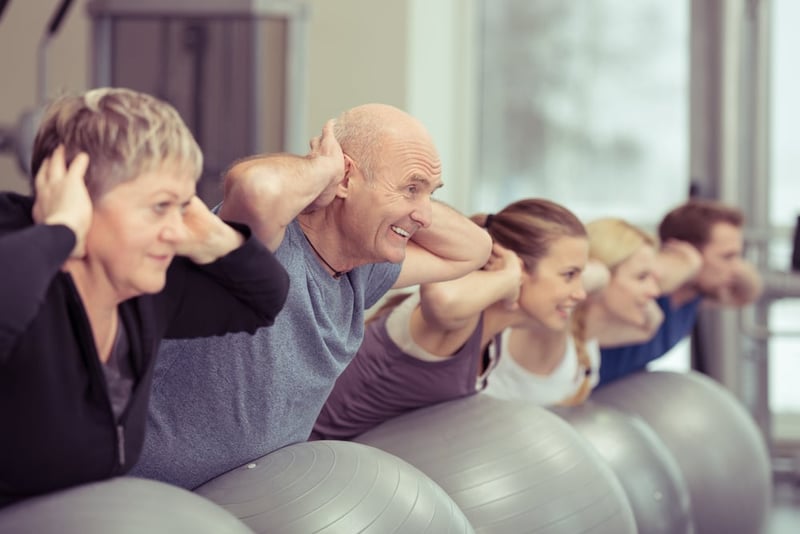
Back
Exercise & IBS

Whether you learn best with one-on-one support or in a small group setting, we have the perfect program for you.
We also offer a wide array of self-guided materials, empowering you with valuable resources to further support your transformation.
How Nutrition Coaching Works
Our programs are meticulously designed to help you achieve your health goals while enhancing your overall well-being.
We provide personalized counseling and unwavering guidance, ensuring that every step of your journey is met with success.
Take Our QuizOnPoint's team of highly skilled online dietitians and nutritionists are dedicated to empowering you with the knowledge and tools to cultivate sustainable habits that lead to long-lasting success on your health and wellness journey.

We all know that exercise is a key component to living a healthy life, but you may be wondering if exercise affects your IBS. Since everyone’s IBS is different, there’s no definitive way to determine if exercise will or will not trigger your IBS symptoms.
Studies show that exercise tends to help IBS. The impact depends on the length and intensity of physical activity. Read more about how exercise helps IBS and what types of exercise are best.
Although exercise likely has a positive impact on IBS, the mechanisms involved remain unknown. There are a few correlations between exercise and IBS that may explain why many people see IBS improvement when they exercise regularly.
Exercise helps to relieve mental and physical stress, which are both IBS triggers. Since the brain-gut connection is so strong, this may explain why the stress relieving benefits of exercise subsequently help to relieve IBS symptoms.
Poor sleep habits create physical stress within your body, which can trigger flares in IBS. Regular physical activity has a positive impact on sleep quality and length.
Exercise, especially weight lifting, can help to move gas through the intestine. When weight lifting, the core is constantly engaged and the process of pulling your belly button towards your spine puts pressure on your intestines, literally pushing the gas out.
High intensity exercise helps stimulate the muscles in your body, including the ones involved in digestion! This can help increase intestinal motility, which is great for people suffering from IBS-C. If you’ve heard the term “runner’s diarrhea”, it’s definitely a real thing. This means that people suffering from IBS-D should stick to lower intensity exercise to avoid urgency and diarrhea.
While exercise can relieve IBS symptoms, there are guidelines to the length and intensity of your workouts. It’s also important to remember that your IBS subtype does matter. As mentioned above, higher intensity workouts speed up gastric motility, so people with IBS-C may benefit from this type of workout more than people with IBS-D . In addition, exercise helps reduce IBS symptoms because it helps relieve stress, so exercising outdoors and with friends is a great way to make physical activity even more effective. Check out the best and worst exercises for IBS below.
The bottom line is, the best workouts for IBS are what works for you. It may take some trial and error to figure out what your body prefers, but that’s okay. We recommend starting small and increasing length and intensity of workouts gradually to see what your body can handle.
To read more about foods to avoid, foods to eat and how to make easy changes to your IBS diet to mitigate your symptoms, download our IBS Nutrition Guide.

Kaitlyn Willwerth is a Registered Dietitian at OnPoint Nutrition. Kaitlyn's work focuses on providing individualized health and lifestyle coaching and, most importantly, support. She is a Certified LEAP Therapist and has also completed the Monash University 'Low FODMAP Diet for IBS' online training course for health professionals.
With so many rigid diets and information about quick fixes on how to look and feel great, it can be hard to find which program is right for you. At OnPoint Nutrition, our personalized programs offers one-on-one coaching from a qualified team of dietitians and nutritionists to help you reach your health goals.